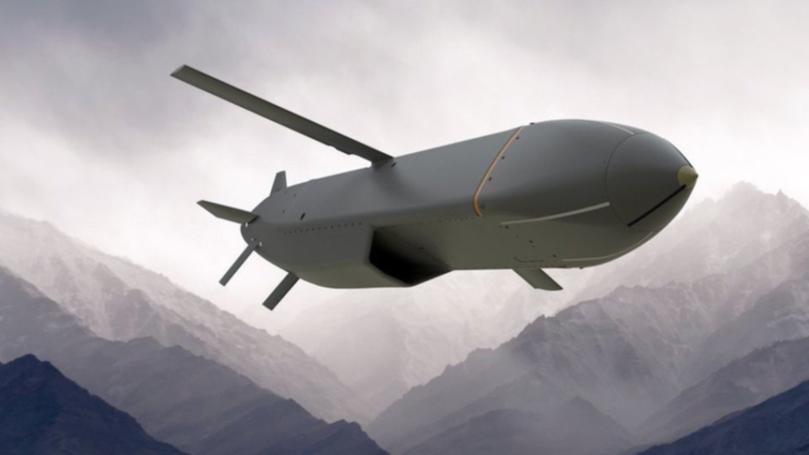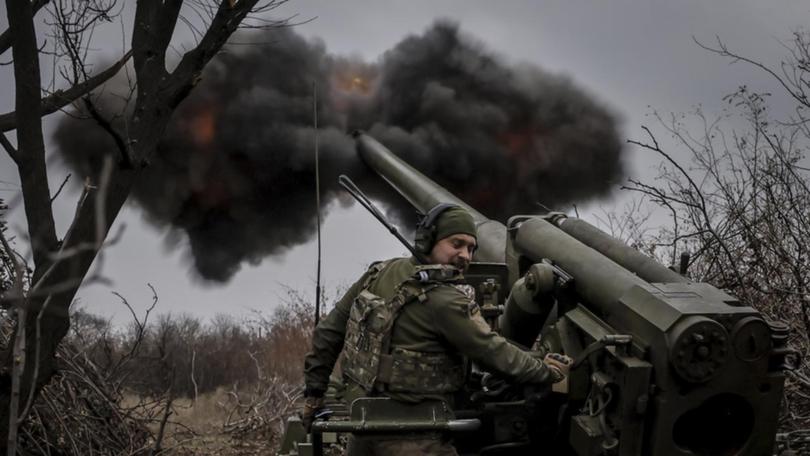Storm Shadow: Ukraine reportedly fires British-made missiles into Kursk region as Biden approves use of landmines

Hours after Ukraine forces launched US made long-range missiles into Russian territory, British-made Storm Shadow missiles have been fired into the Kursk region as pressure mounts on Moscow and a heightened response seems imminent.
Reports from Russian media in the Kursk region, which borders the Ukraine and is the frontline of fighting, said at least 14 huge explosions had been heard, most of them preceded by the sharp whistle associated with incoming missiles.
People in Kursk also reportedly found fragments from the Storm Shadow missiles in the region.
Sign up to The Nightly's newsletters.
Get the first look at the digital newspaper, curated daily stories and breaking headlines delivered to your inbox.
By continuing you agree to our Terms and Privacy Policy.A spokesperson for British Prime Minister Keir Starmer said his office would not be commenting on reports or operational matters.
Britain had previously said Ukraine could use Storm Shadow cruise missiles within Ukrainian territory, but London has been pressing Washington for permission to allow their use to strike targets inside Russia for several months.
On Tuesday, Ukraine used US-made long-range weapons to strike targets in Russia. US President Joe Biden’s administration has allowed Kyiv to use these missiles in and around the Kursk region only.
President Biden has also doubled down on his commitment and has agreed to provide Ukraine with antipersonnel land mines, easing U.S. restrictions on the weapon as Russian forces continue to advance on the war’s front lines.
The Washington Post reports Kyiv has sought antipersonnel land mines since Russia invaded nearly three years ago, but officials within the Biden administration were reluctant to provide the weapons out of concern that they posed too great a risk to civilians.
Rights groups condemned the provision of land mines to Ukraine, arguing that they are dangerous and costly to clear. Ukraine is already the most mined country in the world.
Antipersonnel land mines are small explosive charges buried in or placed on the ground, intended to kill or injure enemy troops. They can be detonated by physical contact, a person in proximity or remotely.
Their deployment can delay the movement of enemy troops or force them to reroute - making it easier to track their path and target them with artillery and rockets.
Antipersonnel land mines differ from antitank mines, which target vehicles. An unspecified number of antitank mines have been sent to Ukraine, the Pentagon previously said.
The United States has also provided Ukraine with Claymore mines, an antipersonnel explosive that is set above ground and can be triggered by an operator.

Secretary of Defense Lloyd Austin said Wednesday that Washington would provide Ukraine with antipersonnel land mines that are “not persistent,” adding that the United States can “control when they self-activate.”
One official told The Washington Post that these mines can be set to self-destruct or lose battery charge to render them inactive at a set time after they are deployed. The official and three others spoke to The Post about the U.S. decision on the condition of anonymity to candidly discuss sensitive internal White House deliberations.
The ability to be rendered inactive or to self-destruct distinguishes the nonpersistent weapons from “dumb” or persistent antipersonnel land mines, which pose the biggest danger to civilians worldwide.
They have a detonation mechanism that is automatically triggered by the weapon’s victim, with no safeguards to distinguish between civilians and military personnel. Persistent land mines can lie dormant for decades, inflicting casualties long after a conflict ends.
The Pentagon in recent years has championed nonpersistent antipersonnel land mines as safer for civilians.
It was not immediately clear how many antipersonnel land mines the administration intends to provide Kyiv. According to one official, use of the weapon will be limited to within Ukrainian territory, with an expected focus on the east, where Ukraine’s forces in recent months have lost territory at the fastest rate since 2022.
Following the announcements on Ukraine’s ability to use US-made hardware against the Russian advance the United States has shut its embassy in Kyiv due to what it called the threat of a significant air attack, a day after Ukraine used US missiles to hit a target inside Russia in what the Kremlin has described as an escalation in the war.
Later, after an air raid siren in the early afternoon jangled nerves in the capital, Ukraine’s military spy agency said Russia was trying to sow panic by circulating fake online messages about a massive looming missile and drone attack.
“The enemy, unable to subdue Ukrainians by force, resorts to measures of intimidation and psychological pressure on society. We ask you to be vigilant and steadfast,” it said.
A US government source said the embassy closure was “related to ongoing threats of air attacks”.
The Italian and Greek embassies said they too had closed their doors while the French embassy remained open but urged its citizens to be cautious.
Ukraine on Tuesday used ATACMS missiles from the United States to attack an arms depot inside Russia, making use of newly granted permission from the outgoing administration of US President Joe Biden on the 1000th day of Russia’s full-scale invasion of Ukraine.
Russia has been signalling to the United States and its allies for weeks that if they give permission to Ukraine to strike deep into Russian territory with foreign missiles then Russia will consider it a major escalation.
“Out of an abundance of caution, the embassy will be closed, and embassy employees are being instructed to shelter in place,” the US Department of State Consular Affairs said in a statement on the embassy’s website.
“The US embassy recommends US citizens be prepared to immediately shelter in the event an air alert is announced.”
Russian foreign intelligence chief Sergei Naryshkin said in an interview published on Wednesday that his country would retaliate against NATO countries that facilitate long-range Ukrainian missile strikes against Russian territory.
In the early afternoon, the Ukrainian air force told people to seek shelter because of a missile threat.
Senior officials told people not to ignore the alert.
That came shortly before Ukraine’s top military spy agency GUR issued a warning about a Russian psychological operation it said involved fake messages claiming to have been sent by the agency.
“A message is being spread via messengers and social networks ... about the threat of a ‘particularly massive’ missile and bomb strike on Ukrainian cities today,” GUR said in a statement.
Two Ukrainian military personnel told Reuters they received messages informing them that Russia would launch more than 300 drones and also use warships, warplanes and ground-based systems to fire missiles in a huge salvo.
One soldier said he received one from a friend.
On Sunday, Russia staged a massive missile and drone strike on Ukraine’s power grid that killed seven people and renewed fears over the durability of the hobbled energy network.
The GUR spy agency said earlier that a Russian military command post had been “successfully struck” in the town of Gubkin in Russia’s Belgorod region, about 168km from the border with Ukraine.
The statement did not specify who carried out the attack, when it took place or the type of weapon used.
Ukraine has also used drones for deep strikes against targets in Russia.
Bloomberg later cited an official as saying Ukraine had fired Storm Shadow cruise missiles, supplied by the United Kingdom, into Russia.
Russian war correspondent accounts on Telegram posted footage they said included the sound of the missiles striking in Kursk region.
At least 14 huge explosions can be heard, most of them preceded by the sharp whistle of what sounds like an incoming missile.
The footage, shot in a residential area, showed black smoke rising in the distance.
The pro-Russian Two Majors Telegram channel said Ukraine had fired up to 12 Storm Shadows into the Kursk region, and carried pictures of pieces of missile with the name Storm Shadow clearly visible.
A spokesperson for UK Prime Minister Keir Starmer said his office would not be commenting on reports or operational matters.
